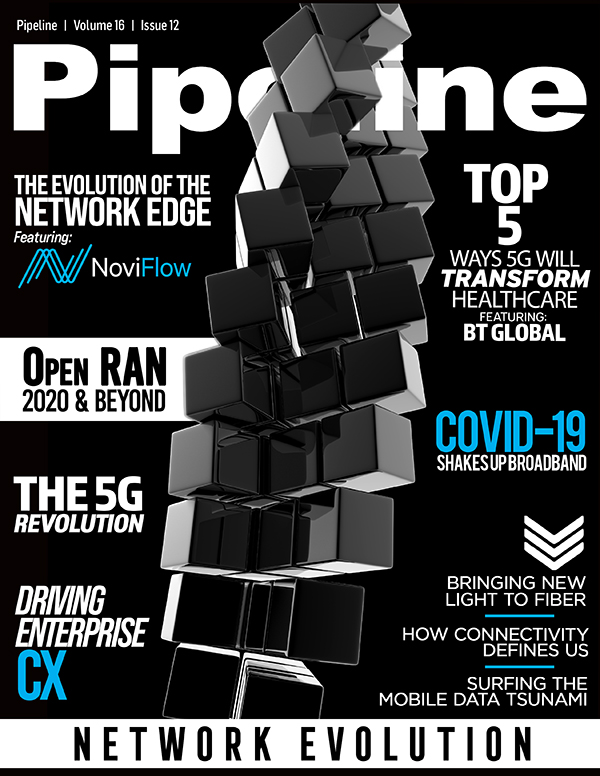5G: Connecting the Future of Healthcare
By: Nadja Risse

COVID-19 hit like an earthquake, thoroughly testing and shaking the foundations of our global healthcare systems. Dire supply chain shortages were exposed, basic non-emergency care was disrupted, and information sharing processes balked under pressure. However, the devastation of this crisis has not been for naught. While innumerable weaknesses were exposed in our healthcare systems, innovative forces across the healthcare industry and their supporting technology partners have already begun uncovering new ways to help to transform patient care. What has become clear is that we must reimagine the future of healthcare, and that advanced connectivity—most especially 5G technology—must be a centerpiece of our design.
Within just weeks of the pandemic striking the globe, the importance of advanced connectivity was underscored by the rapid rise of telemedicine to address the impact of lockdowns and prevent further exposure of critical healthcare workers. Unfortunately, the great promise of simple and effective at-home care has fallen short of expectations throughout the pandemic, with overloads of video and streaming interrupting virtual doctor-patient conversations and, in many cases, reducing patient trust in the telehealth system. We must acknowledge and leverage these shortcomings as key learning opportunities as we design a brighter future of healthcare. The first step is to recognize that our path forward will be greatly supported by 5G technology. Here are five next-generation pillars of healthcare that 5G will help to enable:
Faster, clearer telehealth
Despite current limitations around video quality, research shows that 83 percent of patients intend to use telemedicine after we emerge from the current pandemic. This presents a clear opportunity for healthcare providers looking to evolve with their patient’s needs and wants as well as create a new standard for remote healthcare. 5G can provide the bandwidth necessary to expand telehealth services to rural communities and help provide healthcare services to those who are unable to attend an appointment at a hospital or medical office. As demand continues to grow, healthcare organizations leveraging 5G will have a competitive advantage because they can offer video streams without lag. Imagine virtual consultations with video so crisp it feels as natural as an in-office visit—this is the future of healthcare that patients will soon come to expect and healthcare providers looking to the future are already beginning to explore.
Agile smart ambulances
Improved connectivity in emergency care has the potential to save lives. For example, 5G-connected ambulances, which are already showing promising results in trials in the UK, are poised to be a game-changer. The rapid speed that 5G offers can enable first responders to capture a patient’s vitals, share data with hospitals securely in near real-time, and make a data-informed diagnosis faster than ever before.
In a UK simulation last year, a smart ambulance showcased remote-controlled ultrasounds done over public 5G networks, an exciting innovation that gives us a glimpse into what patients can expect in the not-too-distant future. Using a combination of robotic haptics and real-time imagery, an ambulance paramedic wore a glove that was connected to a clinician in a hospital while performing an ultrasound. The paramedic could feel vibrations through the glove that directed them to scan the areas that the clinician wanted to see, allowing them to remotely control the position of the sensor and see the ultrasound images in real-time. The ambulance was also enabled with a camera that captured video footage and directly shared it with the clinician in the hospital. Because the images were relayed over a high-bandwidth 5G connection, the clinician was able to remotely control the ultrasound examination performed by the ambulance paramedic while also monitoring the overall scene inside the ambulance through the live video.
Looking to the future of healthcare, we can assume that 5G will be essential in remote healthcare environments like ambulance care and help to ensure that medical images are clear, accurate diagnosis can be made, and the best possible emergency treatment can be provided within those critical first few minutes of care.
Stronger augmented reality care
From smart ambulances to deskside doctor visits to the operating room, providers and patients alike benefit from less invasive, tech-enabled treatments. Augmented reality (AR), virtual reality (VR) and spatial computing also have enormous potential to transform healthcare and 5G is the vital underpinning component.


















